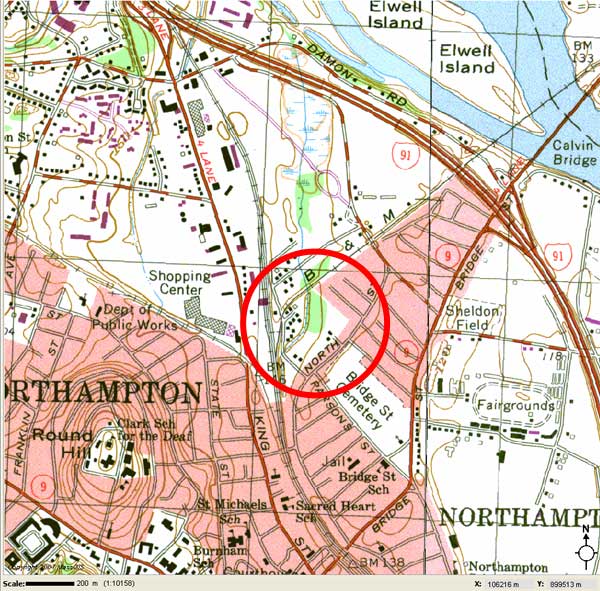An article in the April 10 Gazette suggests that trees and wetlands will be increasingly important in the years ahead to moderate wet and dry periods and preserve water quality in the Connecticut River watershed…
Changes predicted for Connecticut River
“…Typically, we see precipitation held as snow throughout much of New England in winter, and a slow release of water during the spring melting season. But warmer temperatures associated with climate change will change this pattern,” [Timothy O. Randhir, a UMass professor of natural resources conservation] said. “This is expected to decrease the annual snowpack and can cause large increases in runoff during the winter months, especially January. Systems that handle stormwater in urban areas will have to add extra capacity to avoid being overwhelmed by flooding.”
…He predicted a decrease in water quality as surface temperatures rise. Sediment loads carried by rivers and streams were predicted to rise by 50 percent between June and October while the volume of waters receiving the sediment decreased…
“There will also be less water around to dilute pollutants that wash from the land into rivers and streams, so concentrations of water pollutants are expected to rise,” Randhir said.
Effects like the increased volume of winter runoff point to the growing importance of open-space protection and adoption of land preservation strategies, he said.
“Fortunately, sound land-use planning can help protect the watershed, including the maintenance of forests in urban areas, reducing loss of open space throughout the watershed and protecting flood plains,” Randhir said…Having vegetation along streams can buffer contaminants in runoff, according to the study, co-authored by graduate student Eric Marshall…
See also:
Gazette: “Region’s storms going to extremes, report finds” (12/5/07)
Extreme downpours and snowstorms are rising in frequency nationally, with the highest increases in New England…
Massachusetts saw a 67 percent rise in severe storms during [1948-2006], trailing only Rhode Island and New Hampshire…
…the top 10 severe storms in the state all occurred in the past decade…
…scientists expect that extreme downpours will punctuate longer periods of relative dryness, increasing the risk of drought…
Just Released: Planner’s Guide to Wetland Buffers for Local Governments
This survey of today’s buffer management regimes holds several lessons
for Northampton. Among them, the 10-foot buffer zones in our new Wetlands Ordinance
are extremely narrow. Buffer zones in ELI’s survey range from 15 feet
to approximately 350 feet. Some locales require extra setbacks for
structures. Most striking is that some locales desire wider
buffers in areas of intense land use to address the higher levels of
pollution and runoff. By contrast, Northampton has its narrowest
buffers in these areas.
Connecticut River Watershed Action Plan: Remove impervious surfaces within 50 feet of streams
To reduce nonpoint source pollution from stormwater runoff, the
Connecticut River Strategic Plan proposes the removal of impervious
surfaces within 50 feet of streams and the investigation of “functional
replacements” (such as the use of permeable pavement) for impervious
surfaces within 100 feet of streams, in developed areas (PVPC, 2001)…
The Why Files: Wetlands and floods
Wetlands
are major flood-control agents in the watershed of the Charles River,
which flows through Boston. Larson observes that when the Corps of
Engineers arrived to investigate the flooding problem, it was raining
heavily, and they saw the marshes filling and “acting as natural flood
controls. The rain was after a dry period–and the water went
downstream over three weeks rather than three days.”
Photo Essay: Millyard Brook Swells with Water in Winter

Northampton’s
Flood and Natural Hazard Mitigation Plan: Wetlands Buffers of 100 Feet
Are an Effective Flood Mitigation Strategy and Should Be Consistently
Enforced
One great misunderstanding is the belief that floods
only happen in the floodplain. With sufficient rain, almost any area
will experience at least pockets of surface flooding or overland
flooding… Heavy rain in the more urbanized parts of the City with
extensive paved and impervious surfaces can easily overwhelm stormwater
facilities resulting in localized flooding and basement damage.
Stormwater flooding also contributes to water pollution by carrying
silt, oil, fertilizers, pesticides and waste into streams, rivers and
lakes. As the intensity of development continues to increase,
Northampton will see a corresponding increase in serious stormwater
problems. It is therefore important that the City as a whole, not just
residents of the identified floodplain, address the need for
mitigation…
Flooding
is already affecting Northampton’s built-up areas during major storms.
Weakening wetlands buffer zone requirements downtown will make this
worse